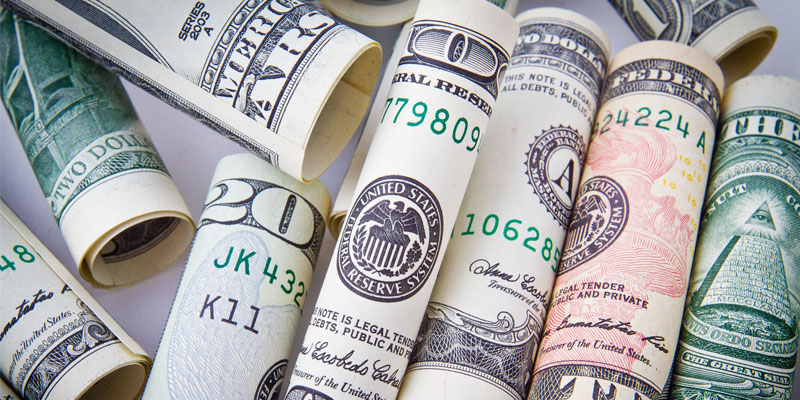Understanding how currency pairs work lays the groundwork for currency trading through retail brokers. Currencies are always expressed in pairs, one currency value vis-a-vis another. No single currency pair can trade independently from the others, they are all interconnected. You always buy one currency and sell another while making a forex transaction. You can have a trading account in any currency and depending on the currency rates and market fluctuations you can post profits. For instance, when you buy USD-EUR, you pay Euro to buy USD. If the US dollar rises vis-a-vis the Euro then you sell Euro to buy USD and make a profit. The first currency of any given currency pair is called the base currency and the latter is called the quote currency. The US dollar is the primary currency and is at the centre of all transactions in the currency market. All currency pairs are dependent on it directly or indirectly. Thus, the health of the US economy and the USD value impacts the world economy.
There are three categories of currency pairs: majors, minors and exotic.
Majors: There are as many currency pairs as there are currencies. The total number of currencies that exist is variable as new currencies are introduced while some others become obsolete every now and then. Currencies can be classified based on the daily volume of transactions for any pair. The currencies that have the maximum trading volume against the US dollar are termed as major currencies. These include the EUR/USD, GBP/USD, USD/JPY, USD/CHF, AUD/USD and USD/CAD. All the major currencies or majors have the maximum liquidity and are traded 24/5 with very narrow spreads.
Crosses: The currency pairs that are not related to the US dollar are called crosses or cross-currencies. These currency pairs have less narrow spreads, and are not as liquid as compared to the majors. The crosses that trade the highest volume are among the currency pairs in which the individual currencies are also majors. The most popularly traded ones are derived from the three major non-USD currencies: EUR, JPY, and GBP. Some examples of crosses include the GBP/CAD, AUD/CHF, EUR/JPY, EUR/GBP.
Exotics: Exotic currency pairs consist of one major currency which is the base currency along with any non-major currency, especially the currency of an emerging economy. For example, the South African rand, Thai baht, Singapore dollar are all exotic currencies. These pairs aren’t as liquid as the majors or crosses, so the spreads are much wider and transaction costs for trading these pairs is also higher.
Long and short positions: When you buy a specific currency pair you take a long position. Conversely, when you sell a specific currency pair you take a short position. It takes a longer time for the price to shoot up and hence it's called as taking a long position. However, it takes a short time for the price to decline and hence the name.
The most favourable currency pairs to trade: When a particular currency pair forms a favourable setup then that becomes the best pair to trade in that setup. A support line breakout indicates a sell signal for any currency pair. Find a strong support line on a currency pair price chart and go short after its breakout to post profit. But don't forget to set a stop loss always otherwise you can deplete your account. If you track longer time setups like daily, weekly and monthly, you can trade multiple currencies when they form a trade setup across any of the time frames.
The ideal time to trade currencies: The best time to trade any currency pair is when it forms a strong signal. When markets are volatile all currency pairs show fluctuations. There are three major trading sessions: London session, New York session and Asian session. FX markets have the highest volatility when both the London and New York markets overlap which is about 8am to 1pm EST. Then at 4pm EST the markets become sluggish. However, after a couple of hours, Japan and then Australia open and so markets gather momentum again. You can trade any currency pair when there is market movement and it forms a favourable setup.
In the market environment it does not count much if a particular trade does well. Your aim should not be on winning each trade but rather on managing and growing your account. For that to happen restrict your market exposure to a level in which you can comfortably apply your strategies without going overboard.
